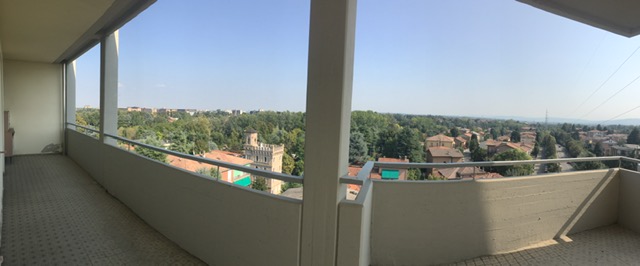 The Origins
The Origins
Galileo Galilei (Pisa, February 15th, 1564 – Arcetri, January 8th, 1642) was a physicist, astronomer, philosopher and mathematician. Thanks to its important contributions in astronomy and dynamics, he is considered one of the fathers of the modern science. Galileo, indeed, introduced the scientific method (Galilean method or experimental scientific method). Galileo Galilei was born in Pisa, on February 15th 1564. His father was Vincenzo Galilei, coming from a middle-class family, and his mother Giulia Ammannati, scion, instead, of a very important clerical family. Galileo was the first of seven children.
Education and Paduan period
His father wanted him to study medicine science, but Galileo was more fascinated by mathematics and physics, intended as disciplines to be applied to the problems of everyday life. At the University of Pisa, Galileo made his first important discovery: the isochronism of the pendulum. He gave up to his studies in medicine in Pisa and moved to Florence, where he began studying hydraulics and mechanics and invented a tool for determining the hydrostatic density of bodies. Meanwhile, he tried in vain to get into the University of Bologna, in the famous mathematician Clavius’ studio and, subsequently, he obtained an important chair of mathematics in Pisa, thanks to Grand Duke Ferdinando I°. His father’s death in 1591 AD created him many problems, so Galileo found himself having to financially support many of his brothers and sisters. It was for this reason, and thanks to some good intercessions, he managed to get a contract with the University of Padua for the chair of mathematics. In Padua, Galileo established many friendships, wrote treatises on physics, mechanics, astrology and military architecture, and began the construction of lenses, glasses…also perfectioning the pre-existing telescope, which was even given to Kepler, who used it in his research . He also invented a machine to make water rise to higher levels, studied a supernova and was investigated by the Inquisition for selling customized horoscopes, considered heretics. The process, however, was shelved, thanks to some influential friends of the scientist. in Padua, Galileo met a Venetian woman, Marina Gamba, with whom he cohabited, and had three children: Virginia (1600-1634) and Livia (1601-1659), never legitimate, and Vincenzo, who recognized in 1619. Meanwhile he had left Marina Gamba and moved to Florence.
First Discoveries and summoning in Rome
In 1609 AD, Galileo discovered the four largest satellites of Jupiter, calling them “Medicean Planets” in honor of the powerful Florentine family. In 1611 AD, Galileo went to Rome to present his discoveries to the famous Jesuit teachers and to Pope Paul V°. At the same time he wrote a treaty about flotation in relation to the specific gravity of bodies, studied the weight of air and the sun spots and wrote four letters in defense of the Copernican Theory. For the Copernican Theory the sun revolved around itself like all the other planets, which both revolved around themselves and revolved around it, following their specific orbits.
Summoned in Rome by the Cardinal Bellarmini
The Copernican conception, however, conflicted with the Ptolemaic one of the Bible, for which the land was motionless in the center of the universe and all planets revolved around it. Galileo also studied the weight of air, deemed by many to be weightless. The scientist believed the cosmology of the Bible was wrong and attracted on him the condemnation of both Jesuits and Dominicans, who were the scientific representatives of the Church. Summoned in Rome by Cardinal Bellarmine, Galileo agreed to abandon his Copernican vision. In 1624 AD, Galileo wrote his “Dialogue about the two maximum systems of the World” which talks about the Ptolemaic and Copernican theory, without taking specific positions. The Clergy has first authorized the publication of the text, then, at the request of the Pope, particularly angry with the scientist, demanded its seizure.
Second summoning in Rome, Inquisition’s Trial and Abjuration
Galileo was summoned by the Inquisition in Rome and taken to trial. The long trial ended with the abjuration of the Copernican theory by Galileo , condamned to house arrest and to a daily recitation of prayers. Once abandoned his crusade on the Copernican theory, Galileo returned to work on the science issues, and in 1633 AD wrote ” Discourses and mathematical demonstrations concerning new mechanical sciences and local motions,” and later he wrote “Discourses and mathematical demonstrations concerning two new sciences. “
Death of the great Scientist
In 1642 AD, the great scientist died; he was then buried in the Church of Santa Croce, where Michelangelo and Machiavelli are buried too.
Personality
Galileo Galilei was a very complex man who, through the study of science, overlapped with the field of theology, entering into open conflict with the Church and being, therefore, condemned. By studying the works of the great Greek scientist Archimedes, he retrieved the empirical method, since a long time lost. The Galilean scientific method consisted of the first phase of the concrete or abstract experiment, and the second phase related to the annotation and its rigorous mathematical analysis. The mathematics was the instrument that Galileo used in its many inventions or reworks, such as: the Helioscope to observe the Sun; the Jovilabe to calculate the relative position of the Earth and Jupiter, the Micrometer put on the cannochiale to measure the distance among the various satellites and their the planet during the observation, a Pump driven by animal energy to extract water from wells, the Hydrostatic Balance to measure the density of the bodies, the Inclined Plane to study the motion of bodies, the Proportional Compass used in geometry, the Thermoscope to measure changes in air density as a function of temperature. The studies of the pendulum motions and parabolic ones made him discover the universality of motion. The study of the motion along the inclined planes made him formulate the principle of inertia, using the study about the frictions. Galileo also studied the speed of light, revealing its limitations. The astronomical observation of the Universe, made him confront with the concept of infinity and collide with the vision of Theology. While remaining a fervent Christian, argued the clear difference between Science and Religion, considering them as two elements that positioned themselves on different levels and had never to interfere each other. In 1992, the Church, after a review that lasted thirteen years, admitted that the sentence imposed by the Inquisition to the great scientist was not right, although it remarked that it happened because Galileo persisted in not accepting the invitation to consider his theories as unproven hypothesis.





